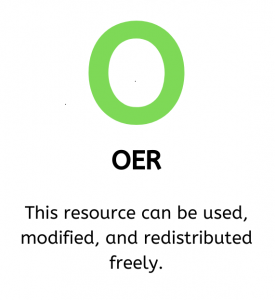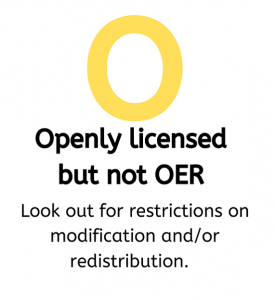| Developed by Elizabeth Heath, Associate Professor, Department of History, Baruch College, CUNY and Anna Lucille Boozer, Professor, Department of History, Baruch College and the Anthropology Program, The Graduate Center, CUNY |
The OER and Course Artifact
We scaffolded the project across three module projects and a final project. We have included the instructions for all four stages of this project.
The student presentations from spring 2020 can be seen on the Baruch College Creative Inquiry Day page.
transitioning to and Teaching with oer
For our Spring 2021 4050H Feit Seminar, Domesticating the Empire, we developed an ArcGIS StoryMaps project as the final assignment. We chose StoryMaps because we thought this digital tool and format would help students to engage with a key theme of the class: the importance of spatiality, locality, geography, and environment to everyday life under empire. In addition, we hoped StoryMaps would offer students a practical way to assemble a project archive that would include visual, textual, and material sources (including sources related to the built environment) while enabling students to experiment with novel and creative ways of constructing historical narratives. In the end, StoryMaps proved an ideal digital tool for a class focused on the multiple and multi-sensory ways that imperial formations shaped the quotidian experiences of ordinary people. The format provided students a creative platform for presenting about their work and the sources they assembled and used. In addition, the format encouraged students to be more attentive to the ways that they organized their materials and presented their work for a broader audience (i.e., Baruch’s Creative Inquiry Day).
Students worked on their projects over the duration of the semester. Each week, students were assigned readings that employed archeological, subaltern, and micro-historical approaches in order to recover the lives and experiences of individuals in the ancient Mediterranean and early modern Atlantic empires. The readings showcased recent scholarship that seeks to recover the lives and experiences of ordinary people who rarely leave much of a trace in the historical archive. These readings were paired with a short weekly research assignment, which asked students to explore a wide range of source materials related to imperial New York. The readings were organized into four different modules, each of which concluded with a short project that would become the basis of the final project. For the first module, students developed a short creative work that captured the experience of individuals connected to a specific imperial site. Modules two and three asked them to assemble an archive related to the site and the major themes of their creative work. During the final module, students were asked to revise their creative work on the basis of the research they conducted and sources they analyzed and to assemble their completed work, sources, and reflection in a compelling manner using the ArcGIS StoryMaps. Students mastered the StoryMaps tool by watching a tutorial created by Frank Donnelly (former GIS Librarian at Newman Library Baruch). The projects underwent several reviews (one by the professors and one by classmates) before the final submission. Students shared the (almost) final versions of their projects at Creative Inquiry Day.
In the end, our experience with this project and StoryMaps was overwhelmingly positive. The digital format offered by ArcGIS StoryMaps fit well with a project that encouraged students to follow historical traces and past clues in order to flesh out the everyday experiences of ordinary individuals living in imperial New York. It is a particularly useful tool for getting students to think about how locality and place shaped past events and the actions of historical actors. This was especially useful at a time when we were not able to do field trips (but we imagine the project would be even further enhanced by site visits). In addition, students embraced the opportunity to present their work in a format that is public-facing, dynamic, and flexible. Finally, the format encouraged students to think both about content and format as essential components of presenting their scholarship to others.
Upon reflection, this way of organizing the class and final assignment (i.e. scaffolding work across the semester) proved successful. It enabled students to complete the project through smaller, relatively low-stakes projects that encouraged sustained engagement and reflection with the project for the duration of the semester and also promoted and encouraged students to revise and rework their projects based on continued research and feedback. We also appreciated the opportunities that this format offers for presentation and digital publication.
Faculty Information
Elizabeth Heath, Associate Professor, Department of History, Baruch College, City University of New York
Anna Lucille Boozer, Professor, Department of History, Baruch College and the Anthropology Program, The Graduate Center, City University of New York
Licensing Information
![]() This assignment and its attendant materials are licensed under a Creative Commons Attribution-NonCommercial-ShareAlike International 4.0 license.
This assignment and its attendant materials are licensed under a Creative Commons Attribution-NonCommercial-ShareAlike International 4.0 license.

 Some of the materials linked to this assignment are OER and others are openly licensed but not OER. Please review the licensing conditions of each individual item.
Some of the materials linked to this assignment are OER and others are openly licensed but not OER. Please review the licensing conditions of each individual item.

